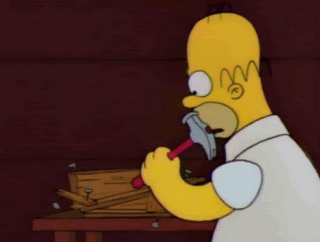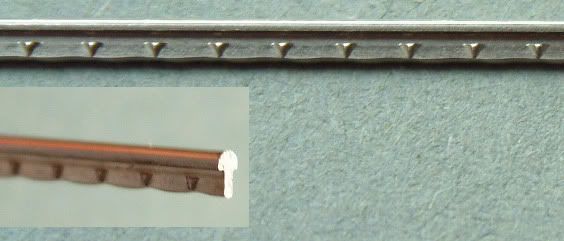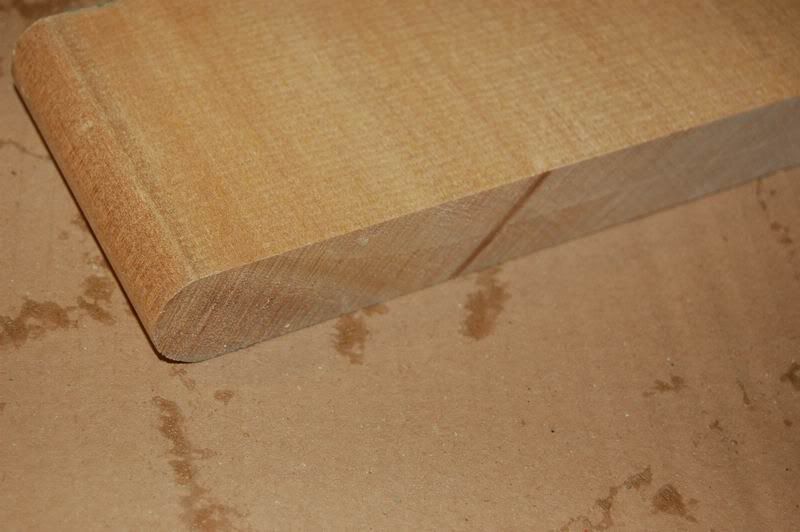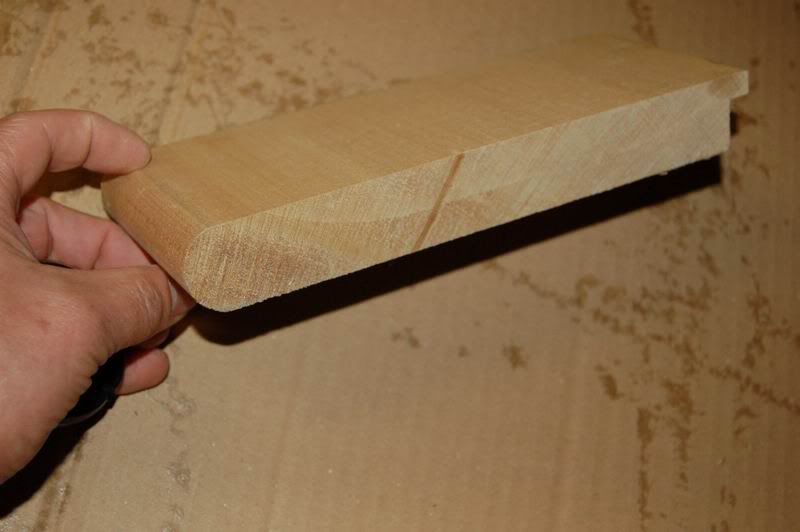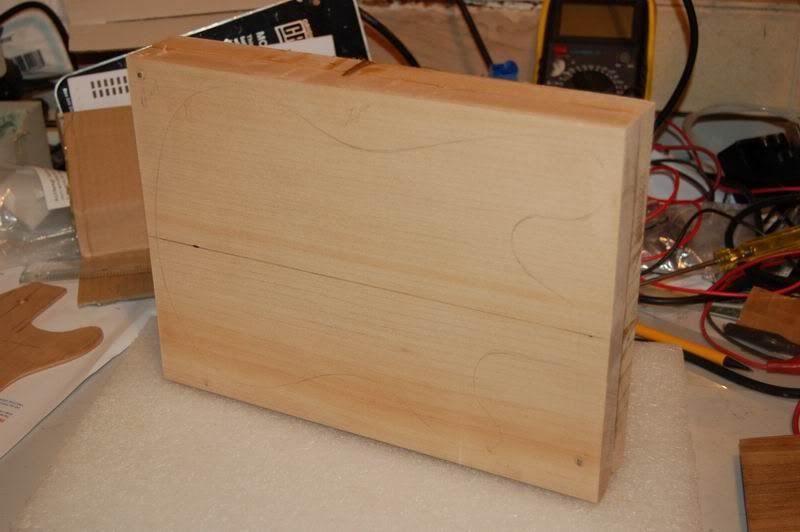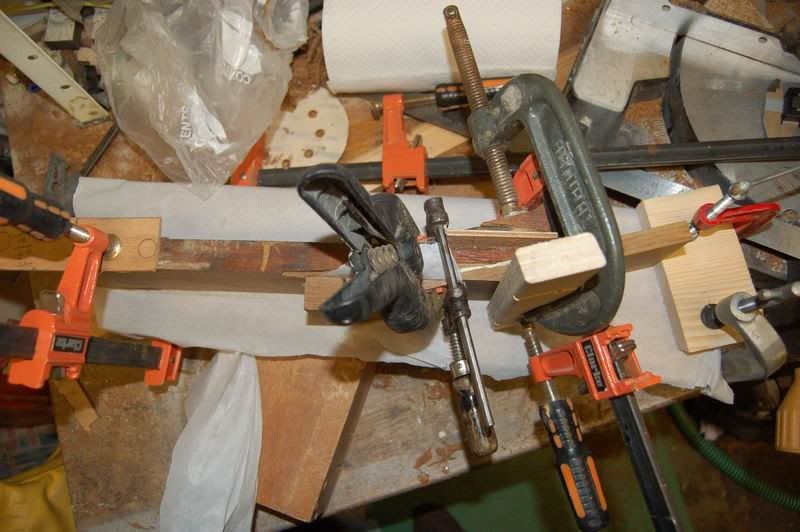
Next up for the body was drilling the holes for the electrics and making the cavity to house them. I spent some time figuring out how big a cavity was needed, and how close to the edge of the body it could be and still be covered with a flat cover plate.
Judged the right place for the control knobs by eye and drilled through with a nice, sharp brad-point bit for zero tear-out:

The keen-eyed amongst you will have noticed the little half-moon cut out right at the tail end of the body. I’d like to tell you the technical reason for this. But I can’t. There isn’t one – it’s just what happens if you’re a little careless putting the router down. It happened on about the second pass around the body blank. It’s been filled with a little plug of wood now.
Using the holes as a guide to position, I drilled out the cavity with Forstner bits – these give a flat bottomed hole and can drill overlapping holes for things like this. The holes for the cavity are offset from the holes for the controls so the pots sit at one side of the cavity.

You can see where I was sketching the cover outline around the holes so I could make a template to rout out the cover recess and a cover to match.


I knew where the jack socket was going to go, but I didn’t drill it yet because….
I had changed my mind about rounding over the front edge of the body, I was still waiting for the tuners before I could finish the neck, so I decided what the heck, I’ll put a binding on the front edge of the body.
Oh Boy!
This meant cutting a ledge all round the top of the body that a plastic binding strip would be glued into.
With my limited selection of router cutters and bearings, the best I could come up with is a ledge just a little less than 2mm deep. I would have liked a little less, as I’m guessing that thinner bindings are easier to deal with.
It didn’t take long to cut the ledge (I put a block of wood in the neck pocket to keep the ends of the ledge neat):

Looked OK for the plastic binding that I’d ordered:

All I needed to do now was glue it in place and scrape it back smooth…
AAAARRGHH!!!
What have I done? ???
What was I thinking? ???
Getting the binding on tightly round the body was a nightmare! I just didn’t have enough hands to hold the binding in all the directions needed at once. It needed a LOT of masking tape:


After the glue had a chance to dry, I took the tape off and found that the binding had sprung away from the body in the cutaways near the neck. Because I’d used PVC solvent glue, the joint was still a little ‘soft’ and the binding could be slowly pulled back into position with clamp pressure. I don’t think I could have done this if I had used Superglue like I almost did (but then the binding may not have sprung away if I had??).

I couldn’t quite rescue the area around the upper cutaway, but the rest of it was OK:

Using the solvent glue means that the binding really moulds to the wood, and gives a most pleasing joint when it has been scraped smooth:


I used single edged razor blades for the scraping with the edge ‘wiped’ across a steel to turn it into a tiny hook. It took a long time to scrape the binding back, but it was strangely satisfying work :). It also gave a *lovely* finish to the end grain on the sides of the body:


Now I could drill the hole for the jack socket:


To be continued…











